What does "X" represent in this image?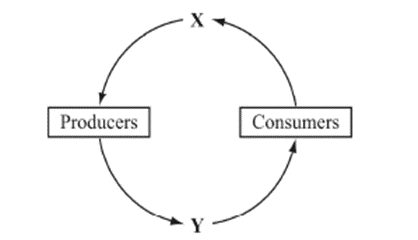
Carbon Dioxide
What type of symbiotic relationship doe the Warthog and Mongoose share?
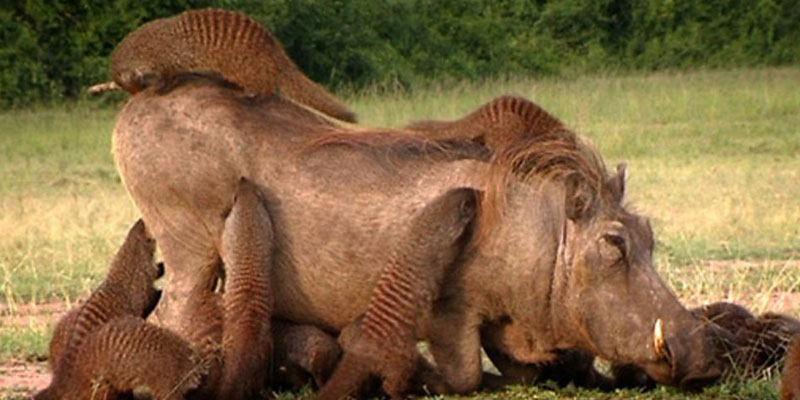
Mututalism
The Deer population would decrease if the...
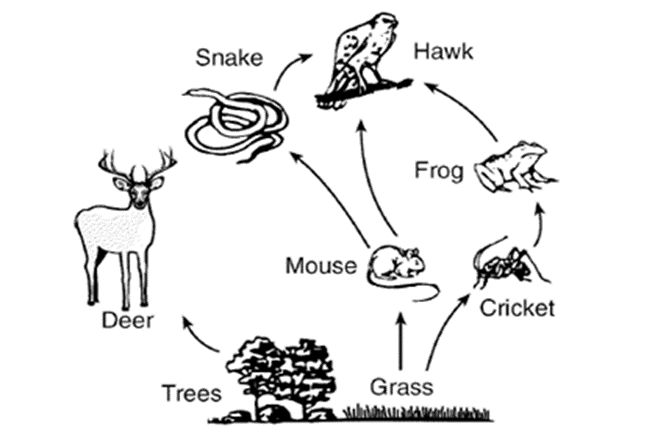
Trees population decreased
Does the chemical (food) energy increase or decrease from the bottom to the top of the pyramid?
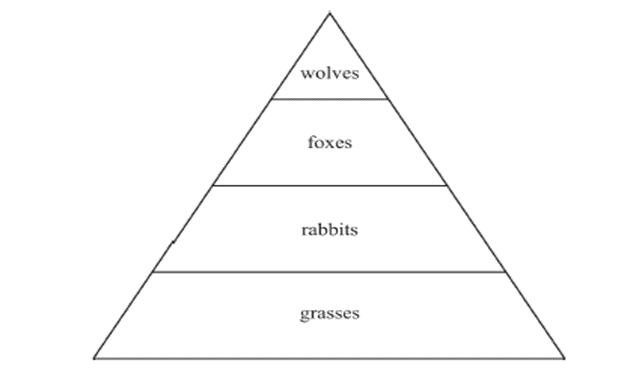
Decreases
What is the lowest level of Organization?
Cells
An organism that can make its own food
Producer
Cellular respiration, decomposition, combustion, and photosynthesis are processes that drive which cycles in ecosystems?
The Carbon Cycle
What type of symbiotic relation ship do the Remora and Shark share?

Mutualism
Which population decrease would harm most of this food chain?

Grass population decrease
What will most likely happen to the rabbits if the grass is removed?
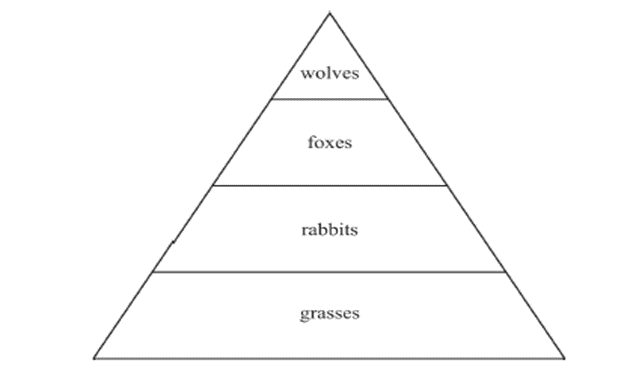
Their population will decrease
What is the largest level of Organization?
Biosphere
The pattern of overlapping food chains in an ecosystem
Food Web
Why is the increase of Greenhouse gasses (carbon dioxide, methane, etc.) a big issue?
It increases the global temperature
What type of symbiotic relationship do the Cowbird and the Buffalo share?
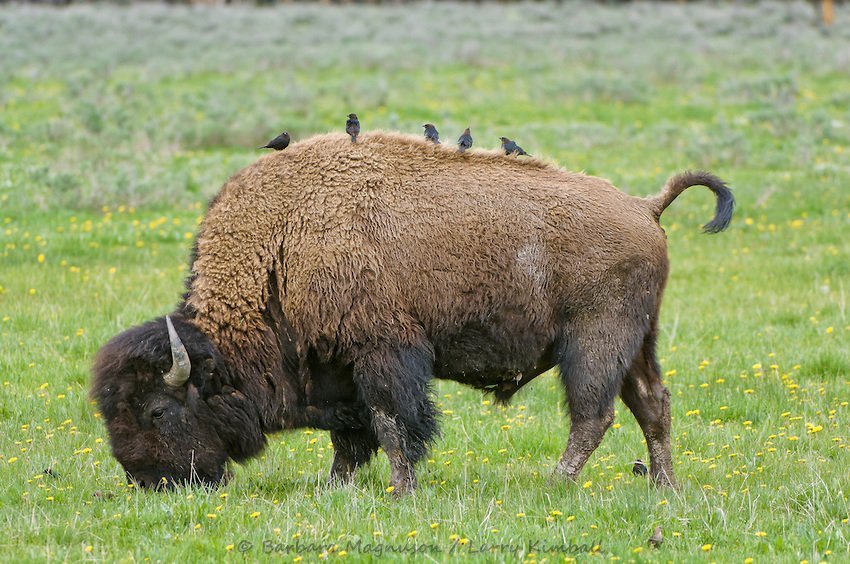
Commensalism
What is the role of decomposers in a food chain?
Break down dead organic matter
What level of consumer are the Foxes in this pyramid?
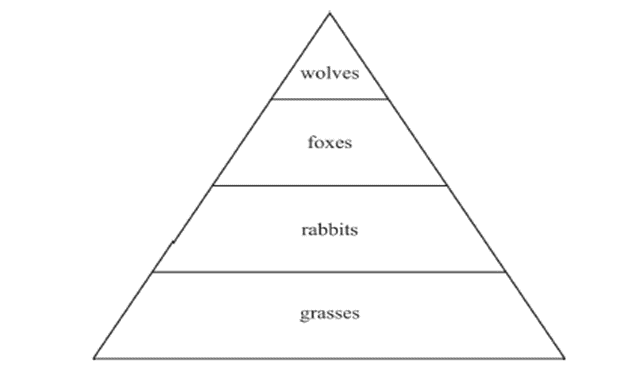
Secondary Level Consumers
A group of the same organism in an area is a...
Population
A diagram that show the amount of energy that moves from one feeding level to another food web
Energy Pyramid
How does the carbon in the grass become part of the lion?
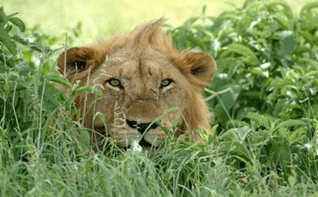
The lion eats a primary consumer or herbivore
What type of symbiotic relationship do the Snail and the Worm share?
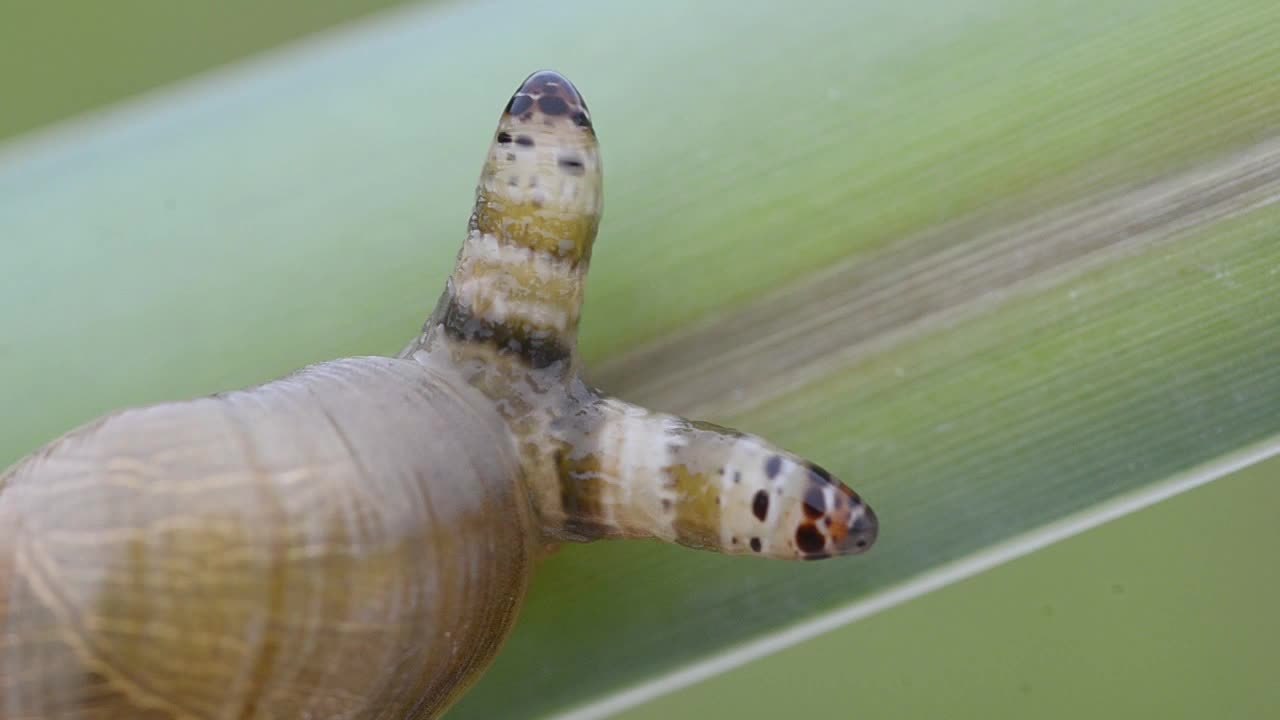
Parasitism
Which food chain below correctly summarizes the flow of energy through an ecosystem?
A. sun→ rabbit→ grass→ fox
B. rabbit→ fox→ sun→ grass
C. fox→ sun→ rabbit→ grass
D. sun→ grass→ rabbit→ fox
D. sun→ grass→ rabbit→ fox
Approximately how much energy is transferred to each level from producer to consumers?
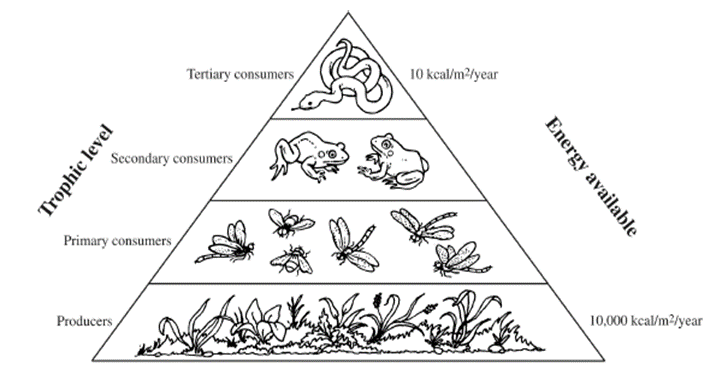
10% each level
A collection of organisms that belong to different populations but all live in the same area and interact with one another is a...
Community
the living parts of the habitat (ex. Grass, trees, other animals, bacteria, etc.)
Biotic Factor
Why is the carbon cycle important?
It reuses and recycles carbon in the ecosystem
What type of symbiotic relationship do the Lion and Gazelle have?

Predator - Prey Relationship (Predation)
Use the food chain to answer the question. In which part of the food chain is the greatest amount of energy transferred?

Grass to Insect
Approximately how much energy is available to the secondary consumers in this energy pyramid?
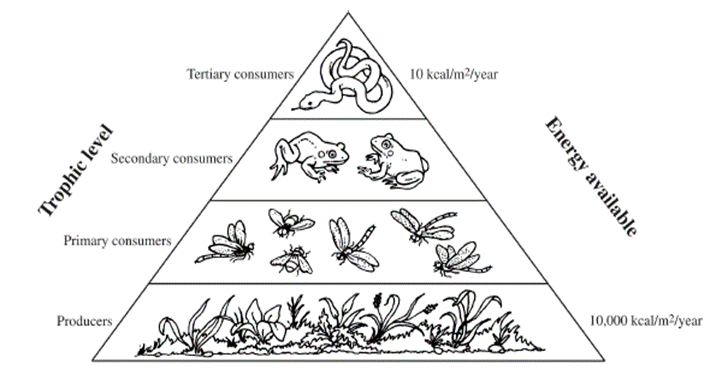
100 kcal/m²/year
A group of land or water ecosystems with similar climates and organisms is called a...
Biome
When a population grows past the ecosystem's ____A____ ____B____, the population starts to die off to return to the ____A____ ____B____. Fill in for A & B
Carrying Capacity
What role do the oceans play in the carbon cycle?
Large reservoir or major absorber (sink) of carbon dioxide
What type of symbiotic relationship is between a Clown Fish and Anemone?
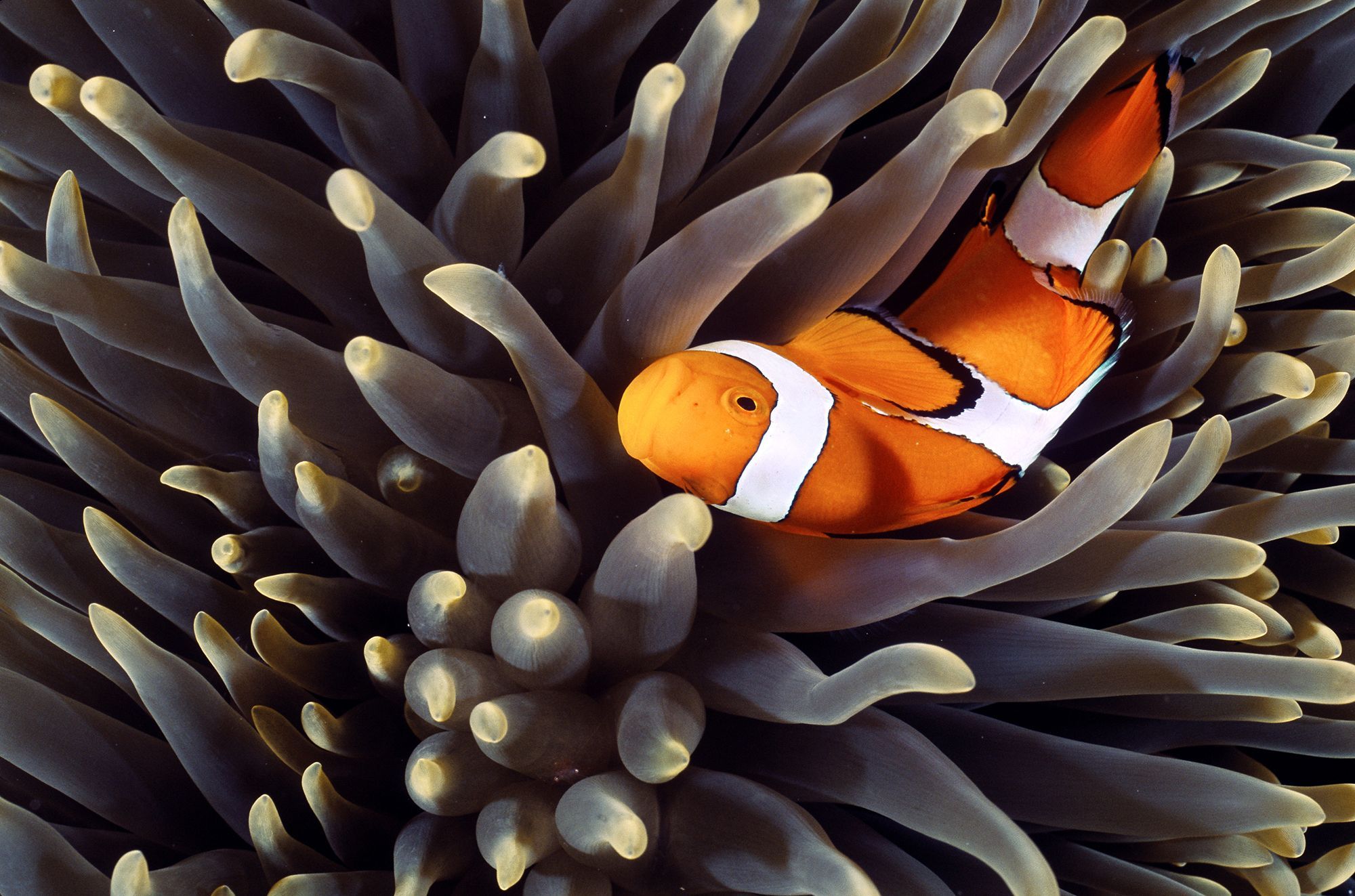
Commensalism
What will most likely happen in the amphipod population is removed from the food web?
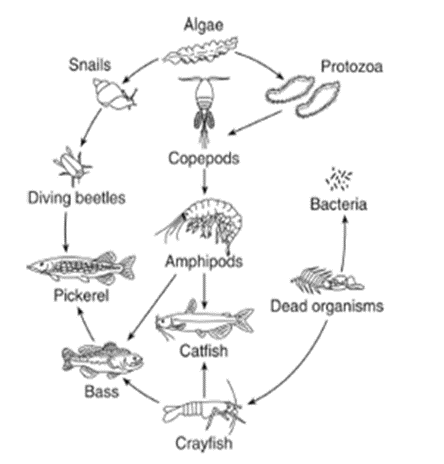
Copepods populations will increase and Catfish/Bass populations will slightly decrease
The least available energy available in the trophic pyramid is the...
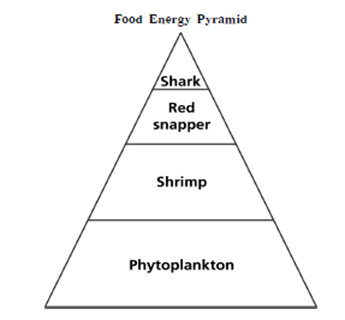
Shark
What is the correct list of the levels of organization in an ecosystem from the largest unit of organization to the smallest?
A. population, organism, community, ecosystem
B. organism, population, community, ecosystem
C. ecosystem, community, population, organism
D. community, ecosystem, population, organism
C. ecosystem, community, population, organism
The gypsy moth was accidentally brought into the United States. The caterpillars of these moths eat the leaves of hardwood trees. Eating these leaves decreases the growth of the trees and may cause the trees to die. What kind of species is the Gypsy moth?
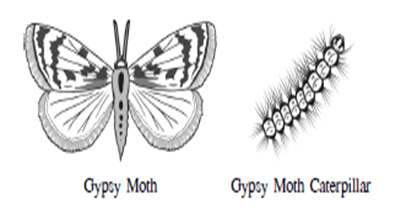
Invasive Species